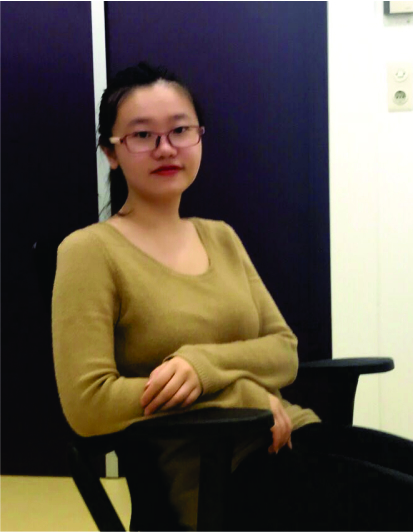
Xiaodan Chen MSc
Leonard S. Ornstein Laboratory, room 1.04
Princetonplein 1, 3584 CC Utrecht
P.O. Box 80 000, 3508 TA Utrecht
The Netherlands
phone: +31 (0)30 253 6924
secretariat: +31 (0)30 253 2952
e-mail: x.chen1@uu.nl
Research
Supervisor: Dr. ir. Marijn van Huis
Promotor: Prof. dr. Alfons van Blaaderen
Funding: ERC Consolidator Grant
Employed: 1 March 2017 – 28 February 2021
In-situ electron microscopy investigation of the oriented attachment mechanism enabling fusion of nanocrystals
Oriented attachment (OA) is an attachment-based crystal growth mechanism, involving spontaneous self-organization of adjacent particles. The OA growth mechanism can break the symmetry of crystals, providing an effective approach for the synthesis of anisotropic nanostructures [1]. Moreover, the bottom-up fabrication can form the objects while the characteristics of the original building blocks are remained [2]. Therefore, study of the OA mechanism can improve the design of nanomaterials with desirable morphologies and properties.
Rapidly-developing in-situ TEM techniques enable the direct observation of the crystal fusion process, which benefits the investigation of the OA mechanism that can be initiated by e.g. heating, electron beam illumination, or solvent evaporation.
In this work, nanoparticles are monitored by in-situ TEM for investigation of the OA of zinc blende CdSe nanocrystals, as shown in Figure 1. Under heating and electron illumination, the nanocrystals rotated and coalesced, forming a larger single-crystalline particle.
Figure 1: HRTEM images showing the oriented attachment of CdSe nanocrystals after electron beam illumination for 0, 3, 4 and 6 minutes. The four images are at the same scale. The scale bar indicates 5 nm.
[1] J. Zhang et al., ACS Nano 8, 6526-6530 (2014)
[2] H. Ataee-Esfahani et al., BSC Adv. 5, 47718-47727 (2015)

